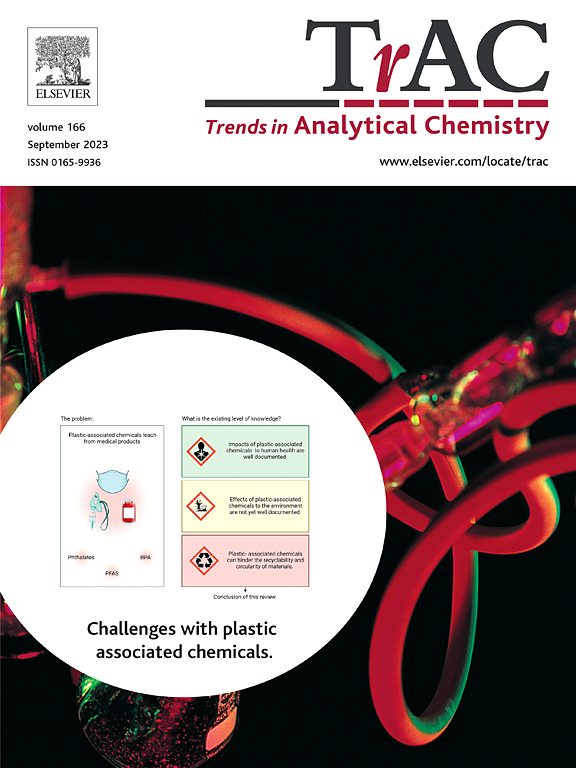Cutting-edge MoS2-Based biosensing platforms for detecting contaminants in food samples
IF 11.8
1区 化学
Q1 CHEMISTRY, ANALYTICAL
引用次数: 0
Abstract
Cutting-edge advancements in sensing technologies have positioned molybdenum disulfide (MoS2) as a transformative material for detecting contaminants in food samples. Leveraging its exceptional electrical, optical, and catalytic properties, MoS2-based sensing platforms have demonstrated remarkable potential in identifying a wide range of foodborne hazards, including pathogens, pesticides, and allergens. This review explores the latest developments in MoS2-enabled sensing systems, emphasizing their ability to synergistically combine electrochemical sensitivity and optical responsiveness for unparalleled detection accuracy and efficiency. The unique two-dimensional structure of MoS2, with its high surface area and tunable properties, enhances sensor specificity and sensitivity, enabling rapid and reliable contaminant detection in complex food matrices. While challenges such as long-term stability, scalability, and signal interference remain, emerging strategies like hybrid nanocomposite engineering and machine learning-assisted data analysis offer promising solutions. This review underlines the transformative potential of MoS2-based sensing platforms in revolutionizing food safety monitoring, ensuring public health protection, and paving the way for sustainable and cost-effective detection technologies.

传感技术的前沿进展已将二硫化钼(MoS2)定位为检测食品样本中污染物的变革性材料。基于 MoS2 的传感平台利用其卓越的电学、光学和催化特性,在识别包括病原体、杀虫剂和过敏原在内的各种食源性危害方面展现出了非凡的潜力。本综述探讨了支持 MoS2 的传感系统的最新发展,强调它们能够协同结合电化学灵敏度和光学响应性,实现无与伦比的检测精度和效率。MoS2 具有独特的二维结构、高比表面积和可调特性,可提高传感器的特异性和灵敏度,从而在复杂的食品基质中实现快速可靠的污染物检测。虽然长期稳定性、可扩展性和信号干扰等挑战依然存在,但混合纳米复合材料工程和机器学习辅助数据分析等新兴策略提供了前景广阔的解决方案。本综述强调了基于 MoS2 的传感平台在彻底改变食品安全监控、确保公众健康保护以及为可持续和具有成本效益的检测技术铺平道路方面的变革潜力。
本文章由计算机程序翻译,如有差异,请以英文原文为准。
求助全文
约1分钟内获得全文
求助全文
来源期刊

Trends in Analytical Chemistry
化学-分析化学
CiteScore
20.00
自引率
4.60%
发文量
257
审稿时长
3.4 months
期刊介绍:
TrAC publishes succinct and critical overviews of recent advancements in analytical chemistry, designed to assist analytical chemists and other users of analytical techniques. These reviews offer excellent, up-to-date, and timely coverage of various topics within analytical chemistry. Encompassing areas such as analytical instrumentation, biomedical analysis, biomolecular analysis, biosensors, chemical analysis, chemometrics, clinical chemistry, drug discovery, environmental analysis and monitoring, food analysis, forensic science, laboratory automation, materials science, metabolomics, pesticide-residue analysis, pharmaceutical analysis, proteomics, surface science, and water analysis and monitoring, these critical reviews provide comprehensive insights for practitioners in the field.
 求助内容:
求助内容: 应助结果提醒方式:
应助结果提醒方式:


